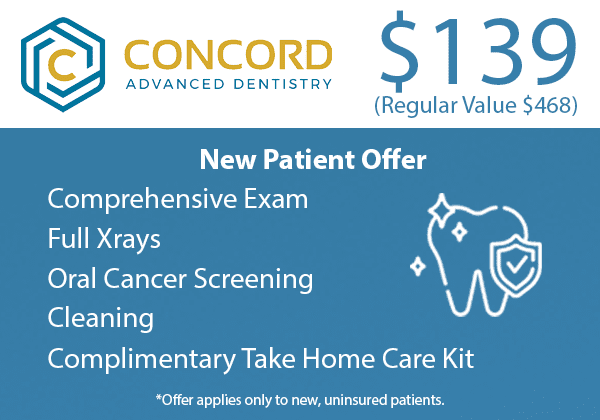What is Cone Beam CT Imaging?
You’ve probably seen a CT scan on television at some point, where the patient lies down on their back and they’re inserted into a big tube to be irradiated. Cone Beam CT imaging is a sub-type of this kind of scanning technology, which was designed specifically for applications in dentistry.
While the patient is seated upright, the Cone Beam CT device rotates around the head to take the necessary images. It’s a safer form of radiation imaging than a traditional CT scan; plus, you don’t have to insert your whole body into a tube.
What Does a Cone Beam CT Image Reveal?
A traditional X-ray shows a 2D image of the bones. The benefit of Cone Beam CT images is that they provide the dentist with three-dimensional images of the teeth and jawbone structures.
3D images take all of the guesswork out of how to properly position a dental implant before surgery even begins. There is always a slight risk that an implant could be installed slightly off-angle, resulting in problems with the dentures or crowns that are attached to them. Cone Beam CT imaging allows the most precise planning possible to take place before your implant operation.
What Are Dental Implants?
When a patient is missing one or more teeth, dental implants are part of the process to give that person new teeth. The implant is a dental device that will eventually serve as the “roots” or “anchor” for an artificial tooth (crown), dentures or a bridge.
This dental implant procedure starts with Cone Beam CT imaging. Once the dentist has those images to work from, the rest of the procedure can be planned out. If a patient doesn’t have enough jawbone structure to support implants, for example, a bone graft procedure might have to take place beforehand.
First Surgery
If there is sufficient jawbone structure, the first surgery will involve your dentist opening up the gums. If any tooth structure remains, that will first be removed. Next, the dentist will insert the implant (made from titanium) into the jawbone.
Osseointegration
As you heal from the first surgery, the dental implant will be integrated into your jawbone structure. In other words, it becomes a semi-permanent part of your jaw. A dental cap is placed over the implant for the healing period, which can take several months.
Restorative Tooth Placement
During the final step, the dentist will attach your new crown, dentures or bridge to the implant. If there’s any problem with your crown or denture in the future, that part can be easily replaced while the implant stays in place.
Precision Imaging with Cone Beam CT
The dentures, crown or bridge that attached to your implant will restore your smile and remove any difficulties chewing due to lost teeth. Thanks to the advanced imaging techniques with Cone Beam CT, the process of dental implants is now easier and safer than ever.
Cone Beam CT imaging allows us to perform the most accurate dental implant procedures available to date at our Concord Advanced Dentistry office. Contact us today to schedule a consultation.


